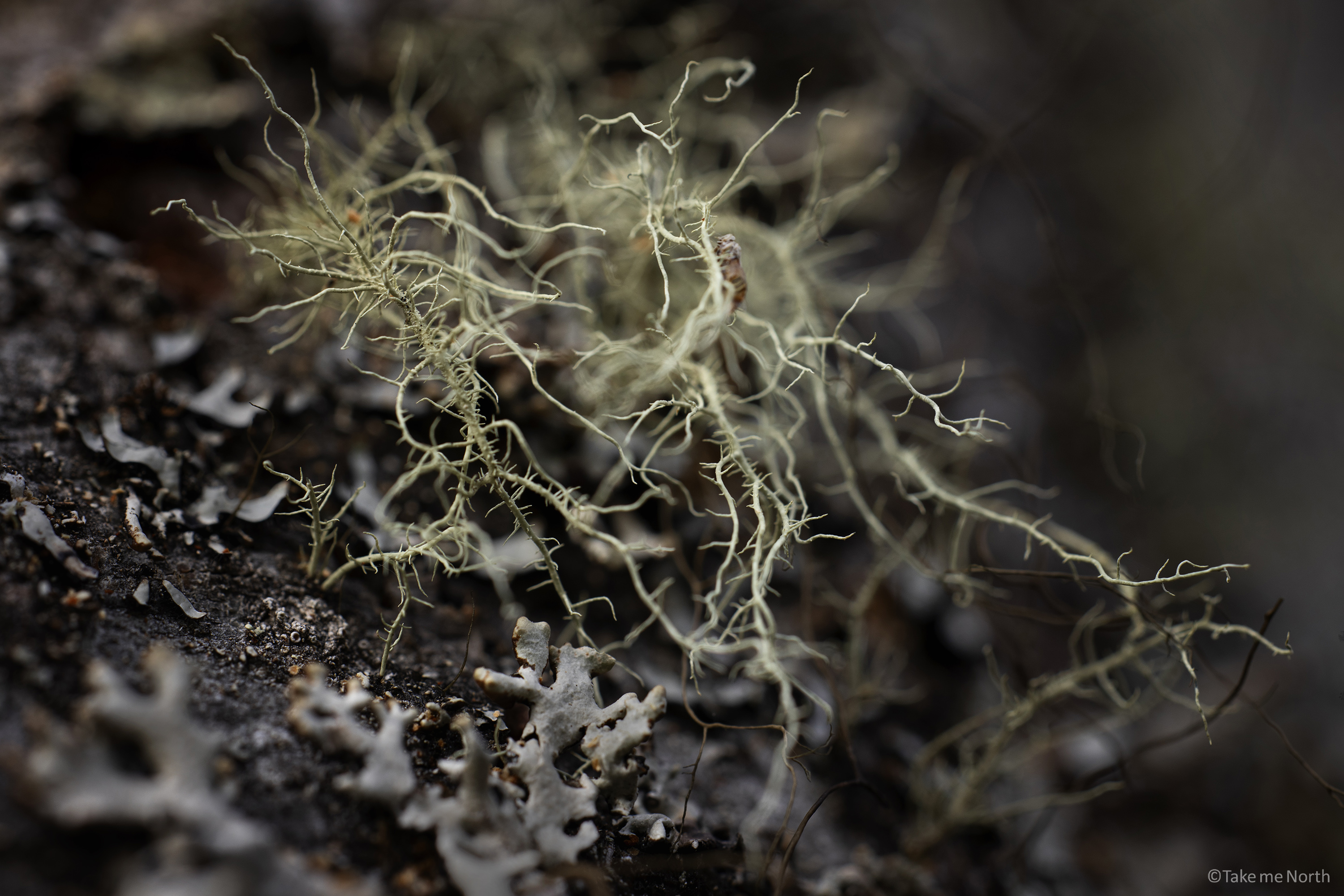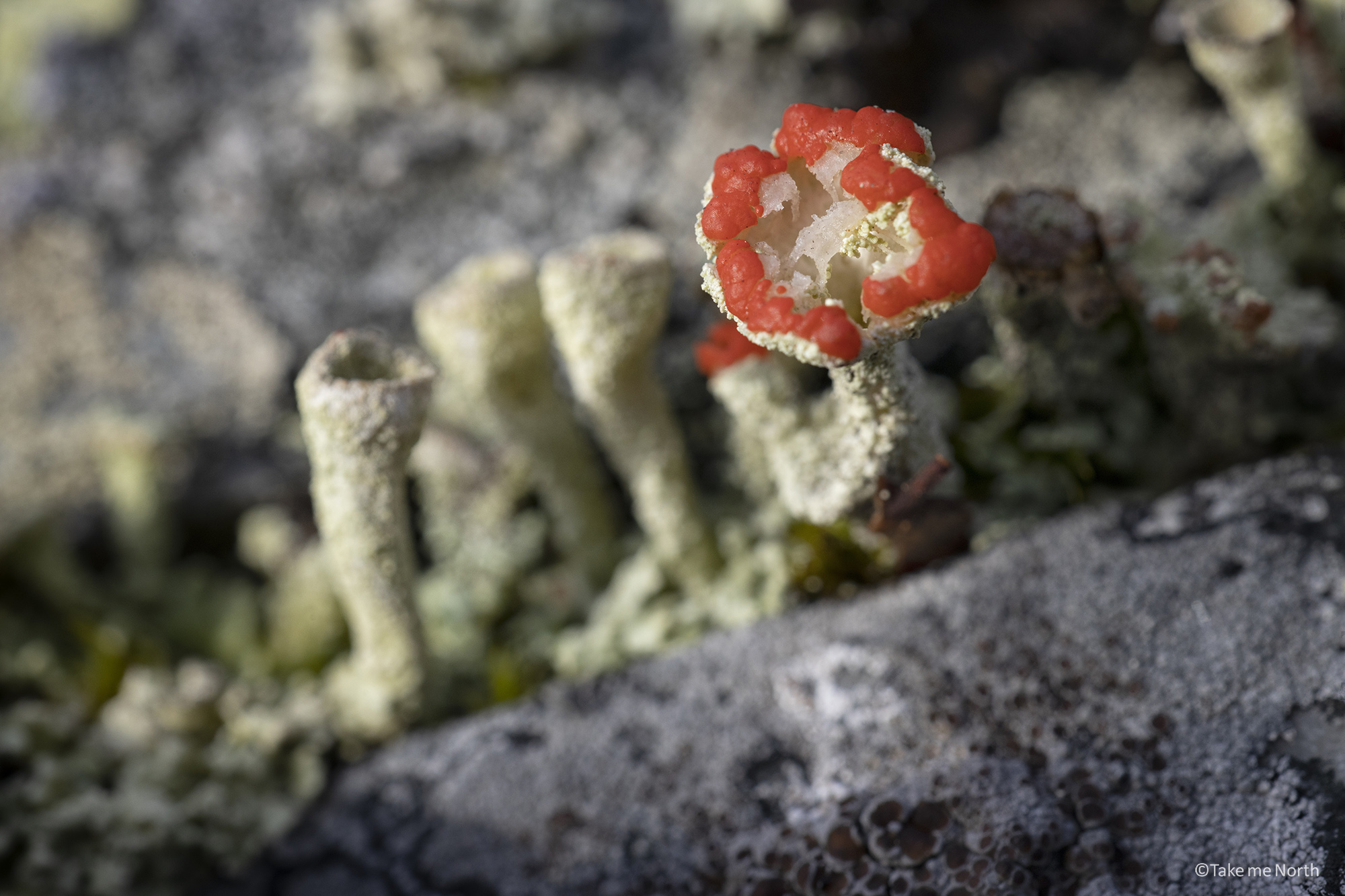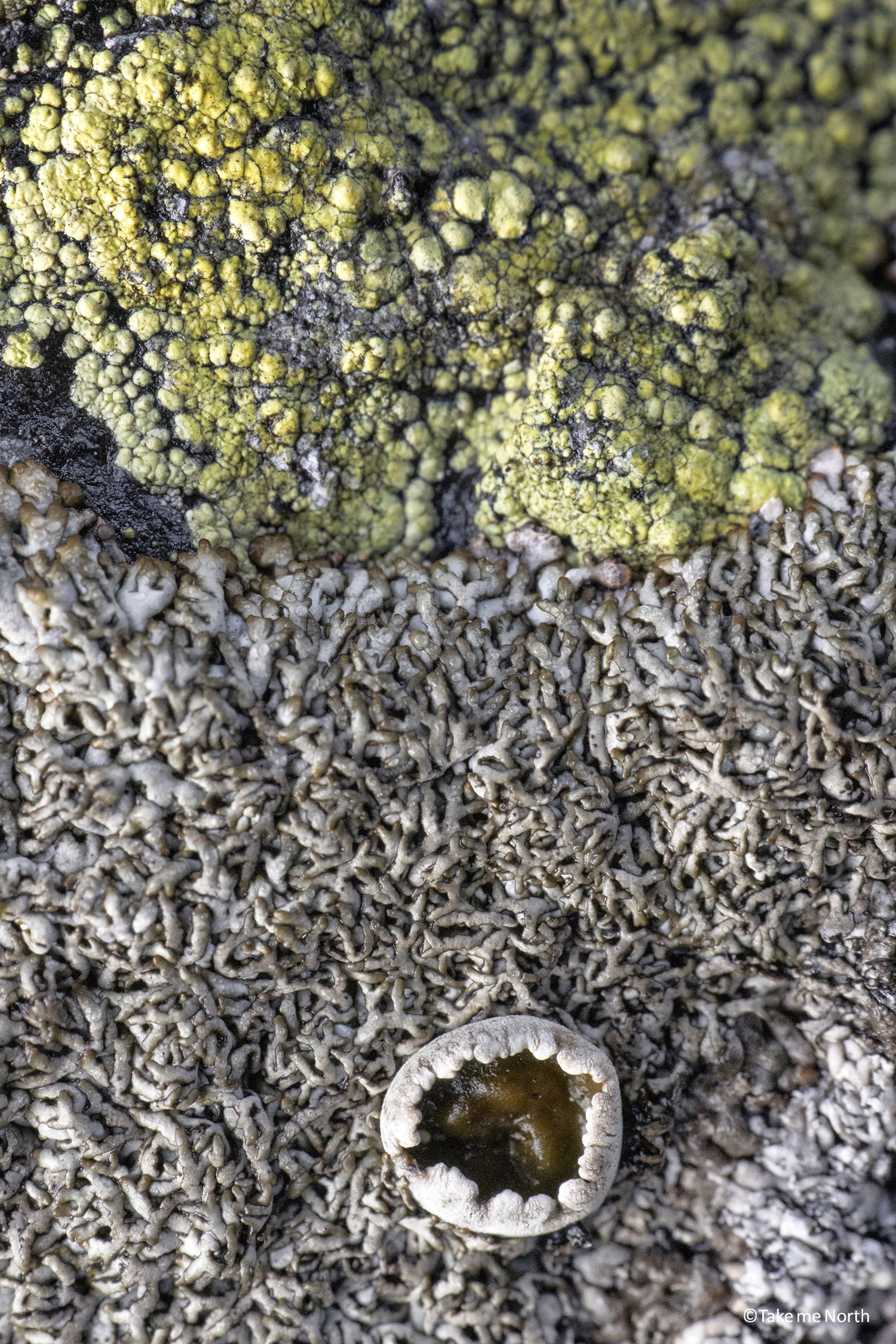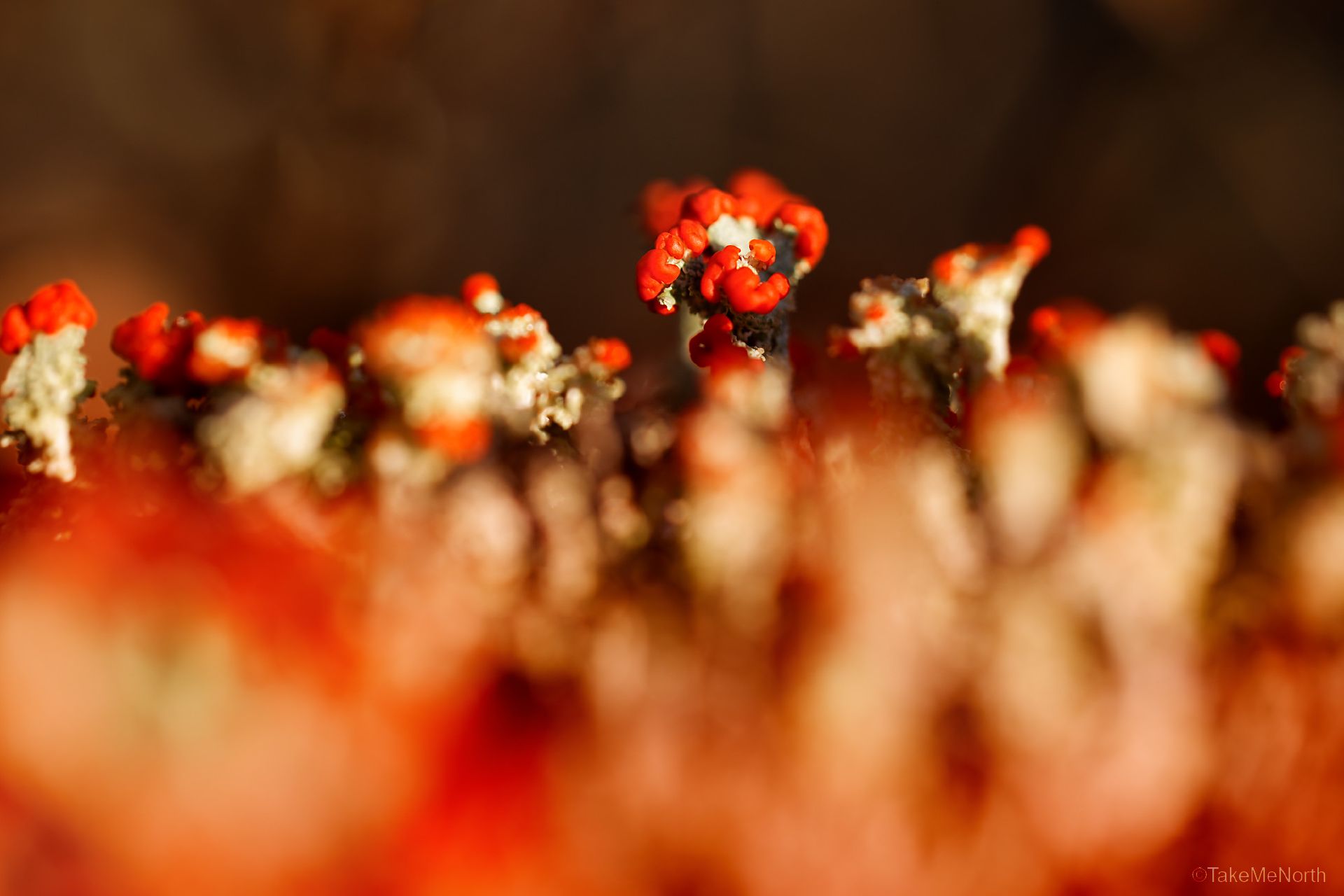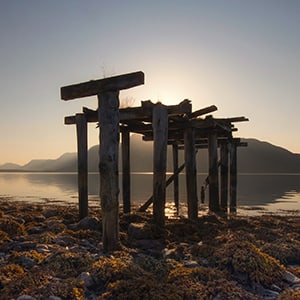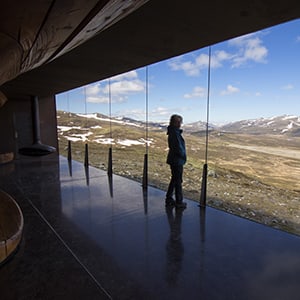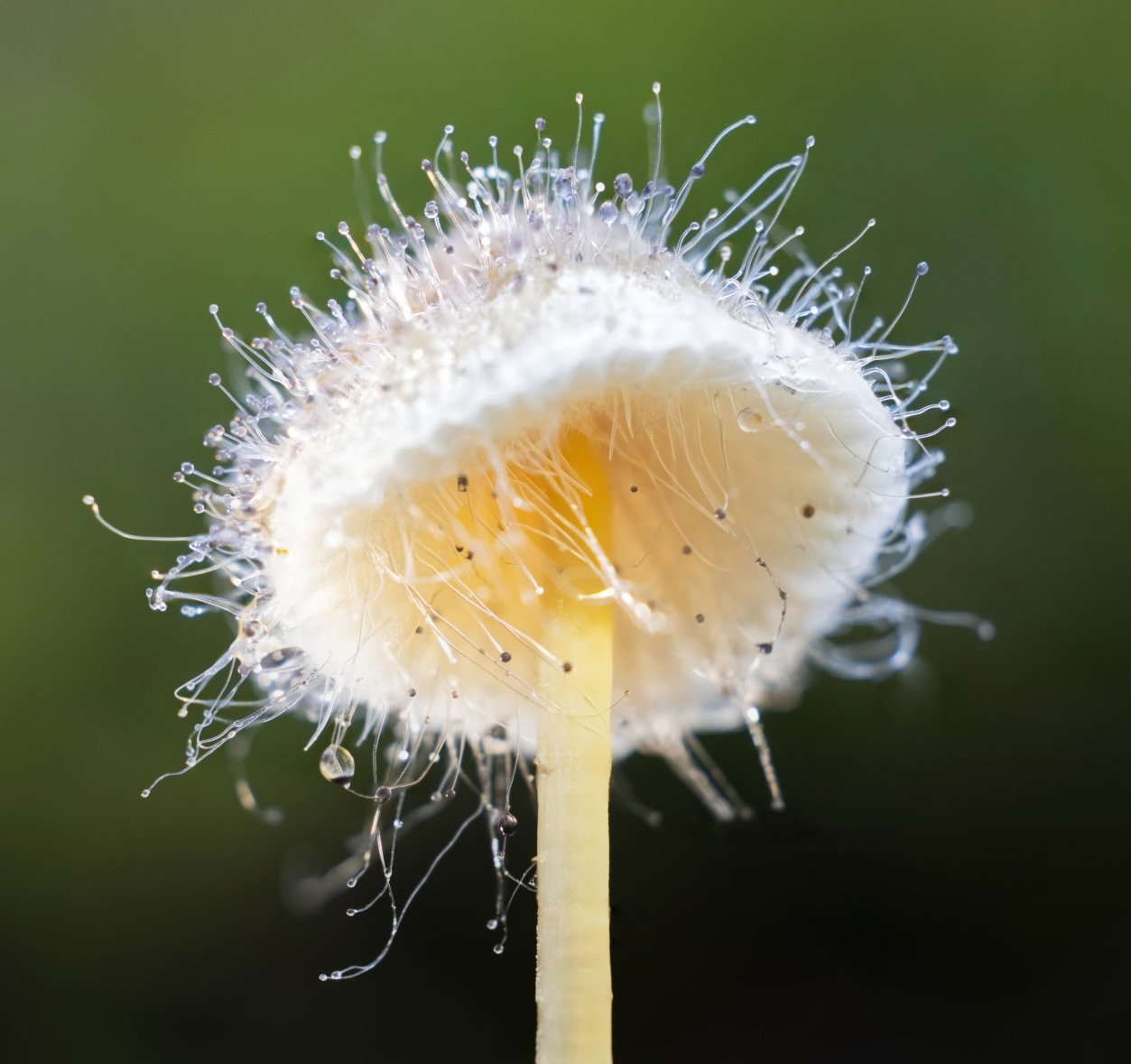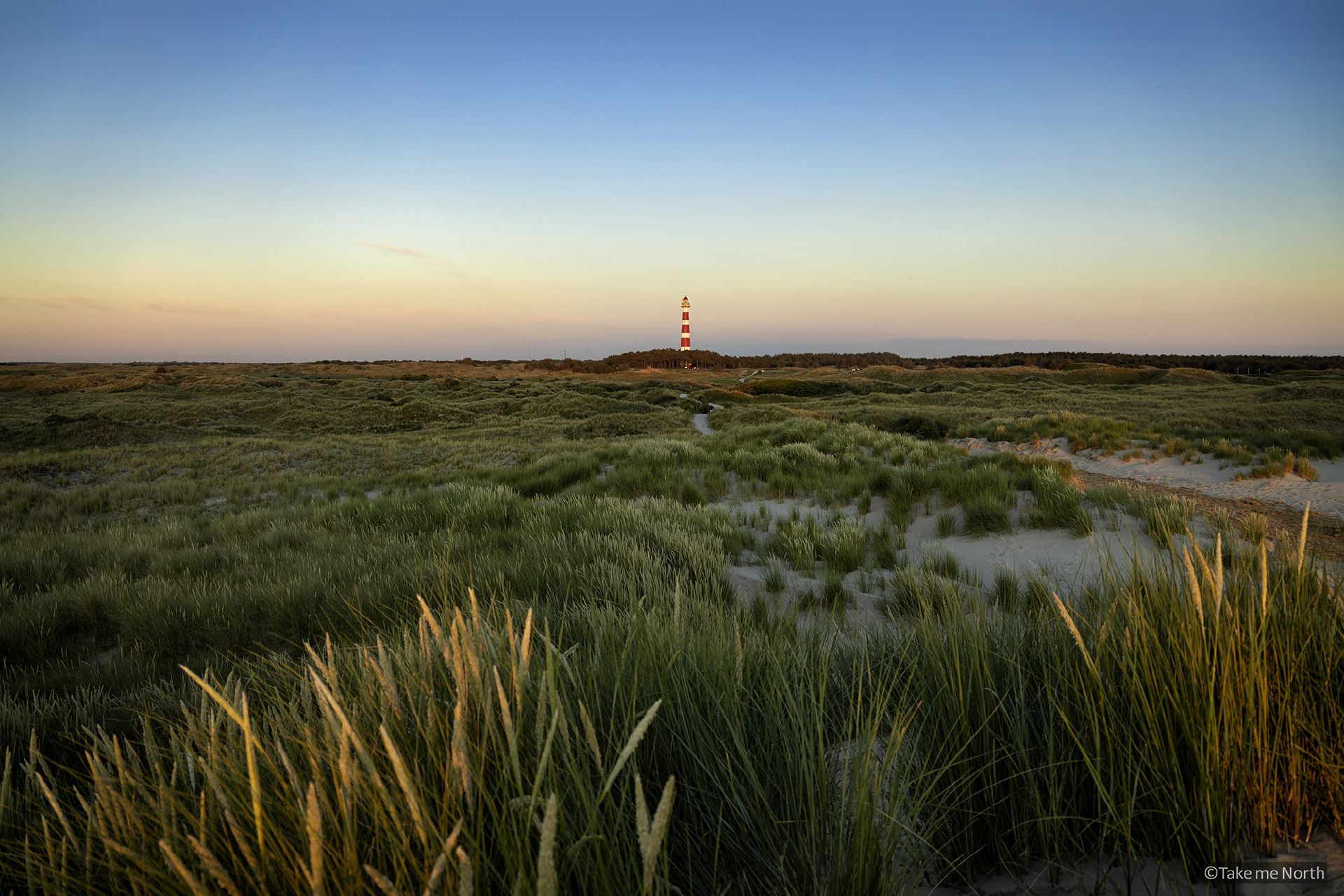The Rondane is a mountainous area in central Norway. A large part of the landscape is well above the tree line. Besides low shrubs, not much seems to be growing here, but if you take a closer look, a microcosmos appears right under your feet. The rocky plains feature bright patches of reindeer moss, and when you look closely, beautiful miniature lichens emerge from the rocks and soil.
Lichens
To tackle the first misconception: lichens are not plants. It is a composite organism, consisting of a fungus that grows symbiotically with algae or cyanobacteria in a community of organisms. Different kinds of lichens have adapted to the various climate conditions across the world. It is estimated that 6-8% of the earth’s land is covered by lichens!
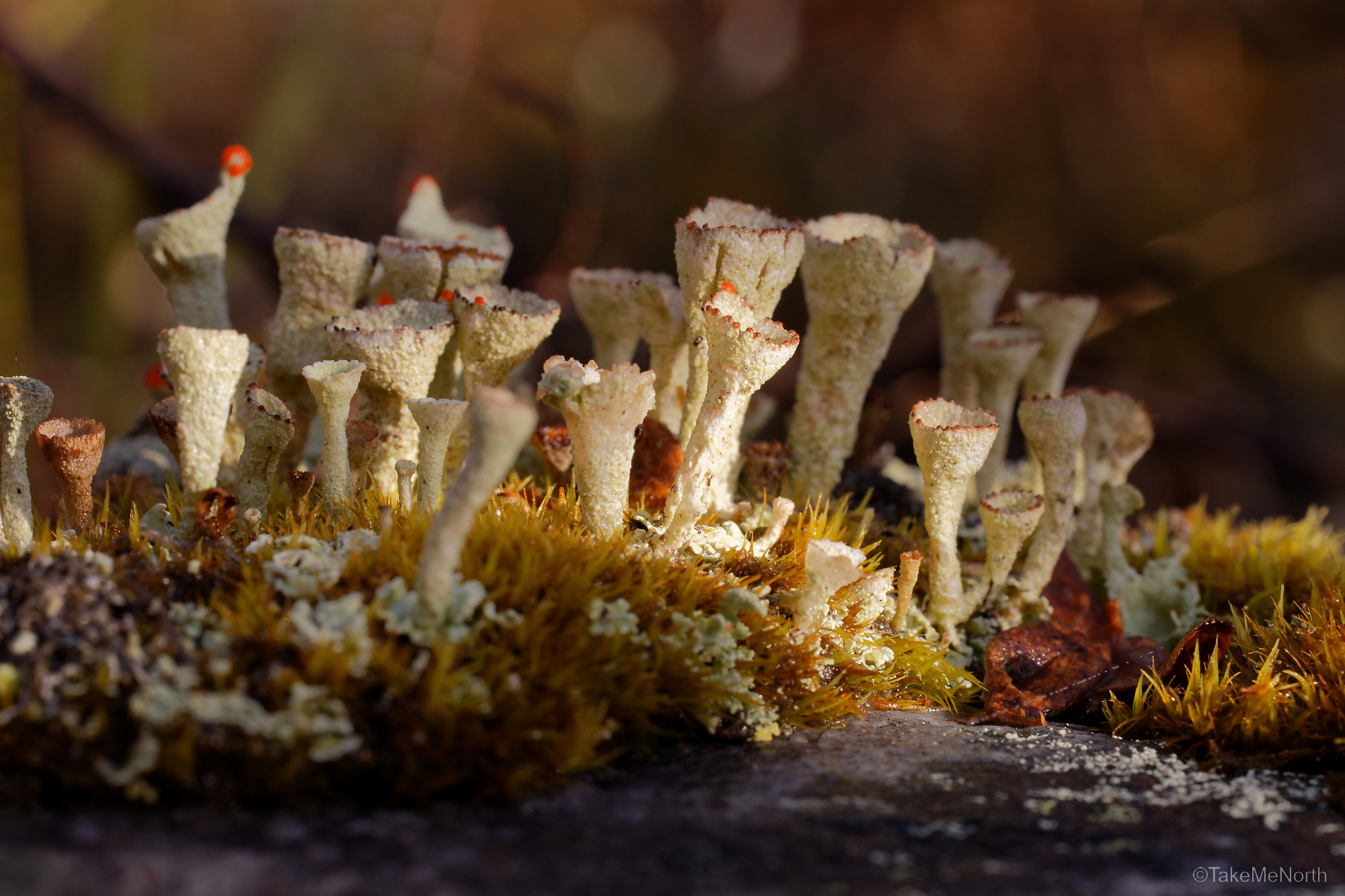
A group of Cladonia asahinae (Pixie cup lichens).
Unlike many people think, Lichens are not parasitic. They do not have roots that absorb nutrients as plants do. The fungus partner, called the mycobiont, anchor themselves to stones, wood, and other substrata with tiny hairs called rhizines. The mycobiont provides structure, shelter, and moisture for the photobiont (the algae or cyanobacteria). In return, the photobiont provides the fungus with nutrients through photosynthesis. Since lichens get their nutrition from the atmosphere, they are sensitive to air pollution. The general form of reproduction is vegetative; a fragment of a lichen can grow a whole new colony.
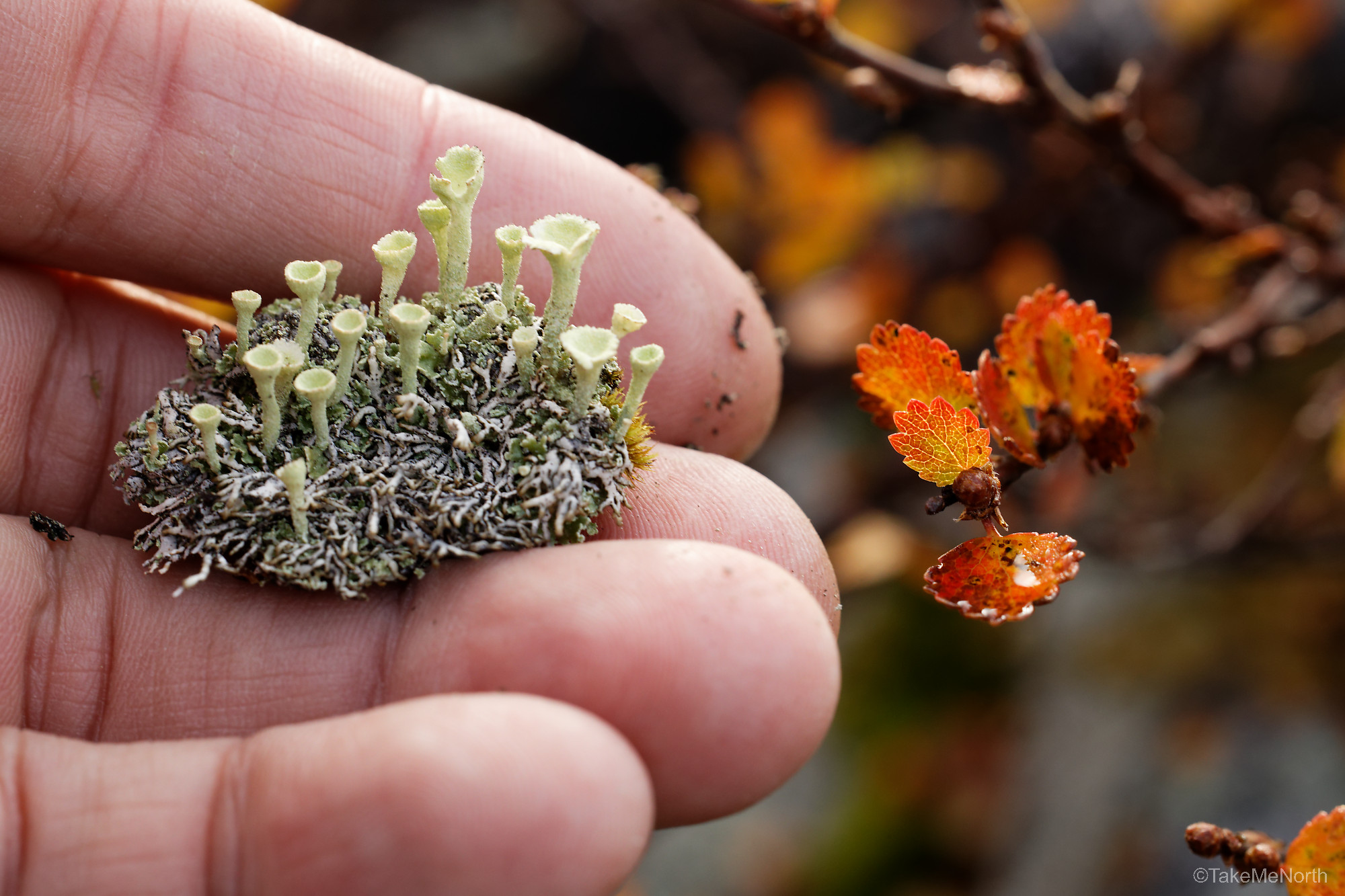
A group of pixie cup lichens that got detached from its substrate
Lichens come in many shapes and colors. They grow incredibly slow, often no more than 0,1 mm per year. They are categorized by their growth structure. There are gelatinous (jelly-like) forms, powdery lichens, and even structureless forms, but the predominant forms are Crustose, Foliose, and Fruticose.
Crustose lichens
Crustose lichens simply form crusts on their substrate (like tree bark or rocks, but also on man-made surfaces like roof tiles). They come in many colors and can form amazing patterns.
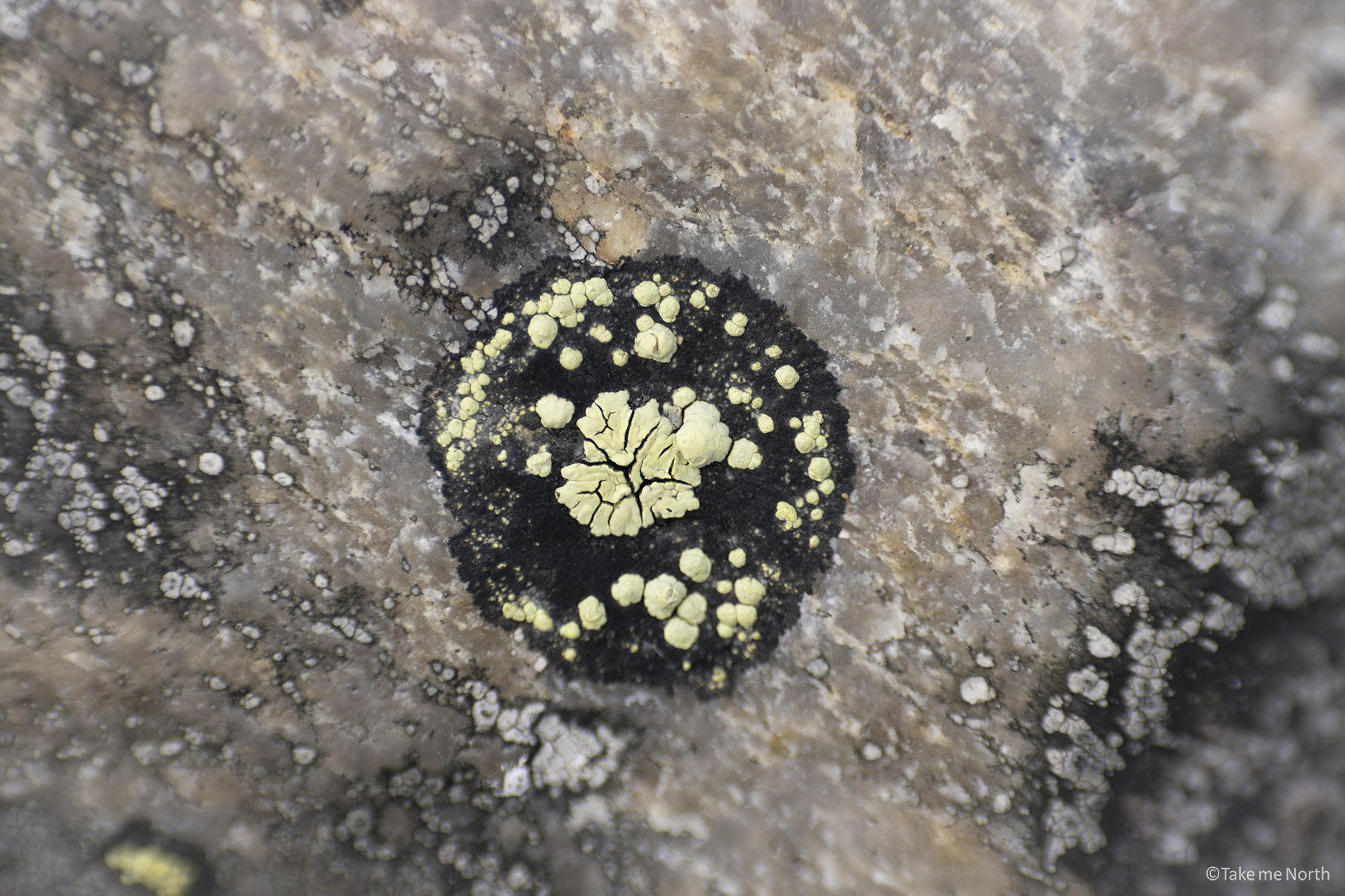
Example of a crustose lichen on a rock surface
Foliose lichens
Foliose lichens grow in 2-dimensional, leaf-like lobes with a distinct top and bottom leaf-side.
Fruticose lichens
Fruticose lichens grow in 3-dimensional structures, for example like mini-shrubs. The many different species of Cladonia, which are abundant at the Rondane, are fruticose lichens.
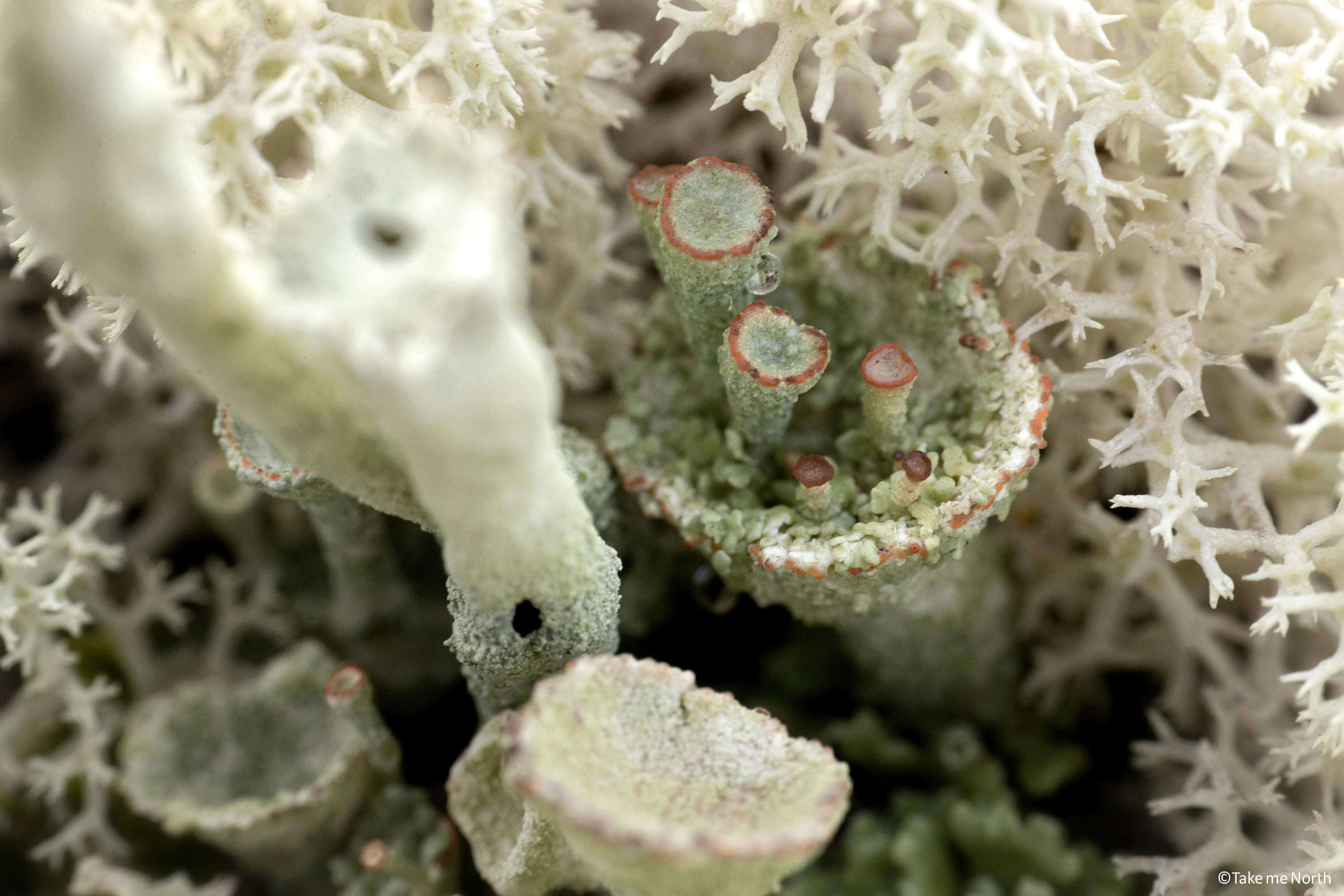
Cladonia rangiferina (Reindeer lichen) en Cladonia asahinae (Pixie cup lichen).
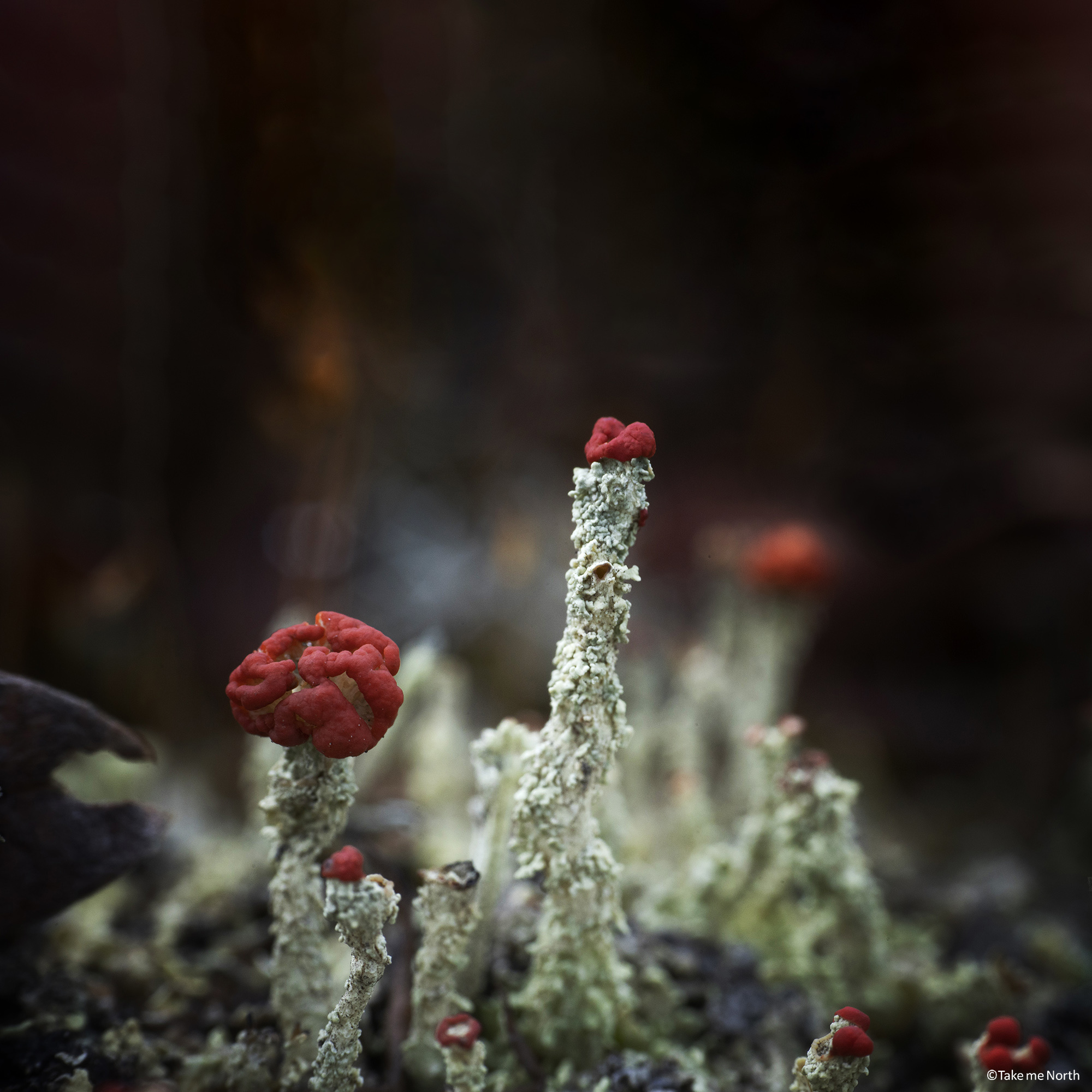
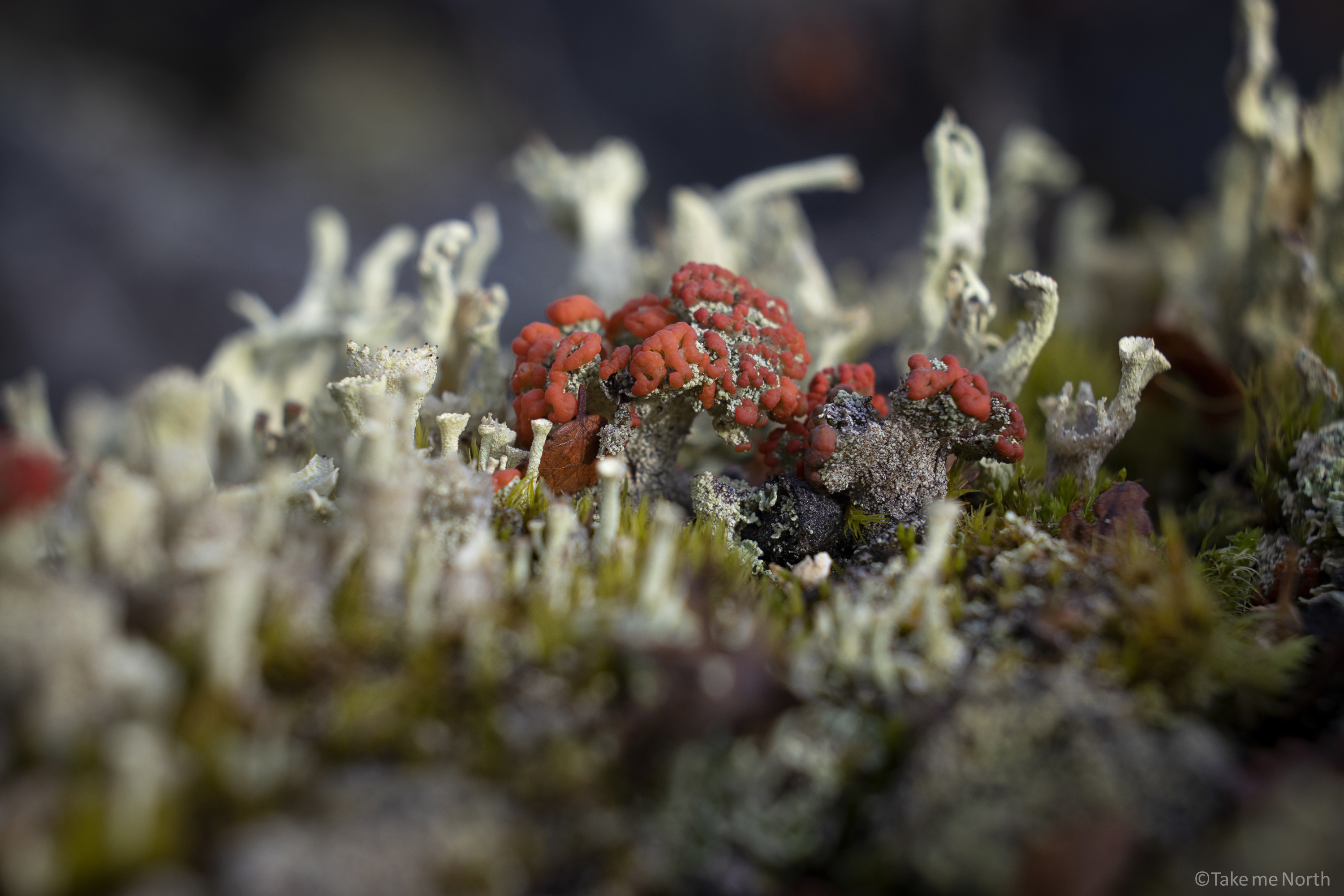
Cladonia cristatella (British soldier lichen).
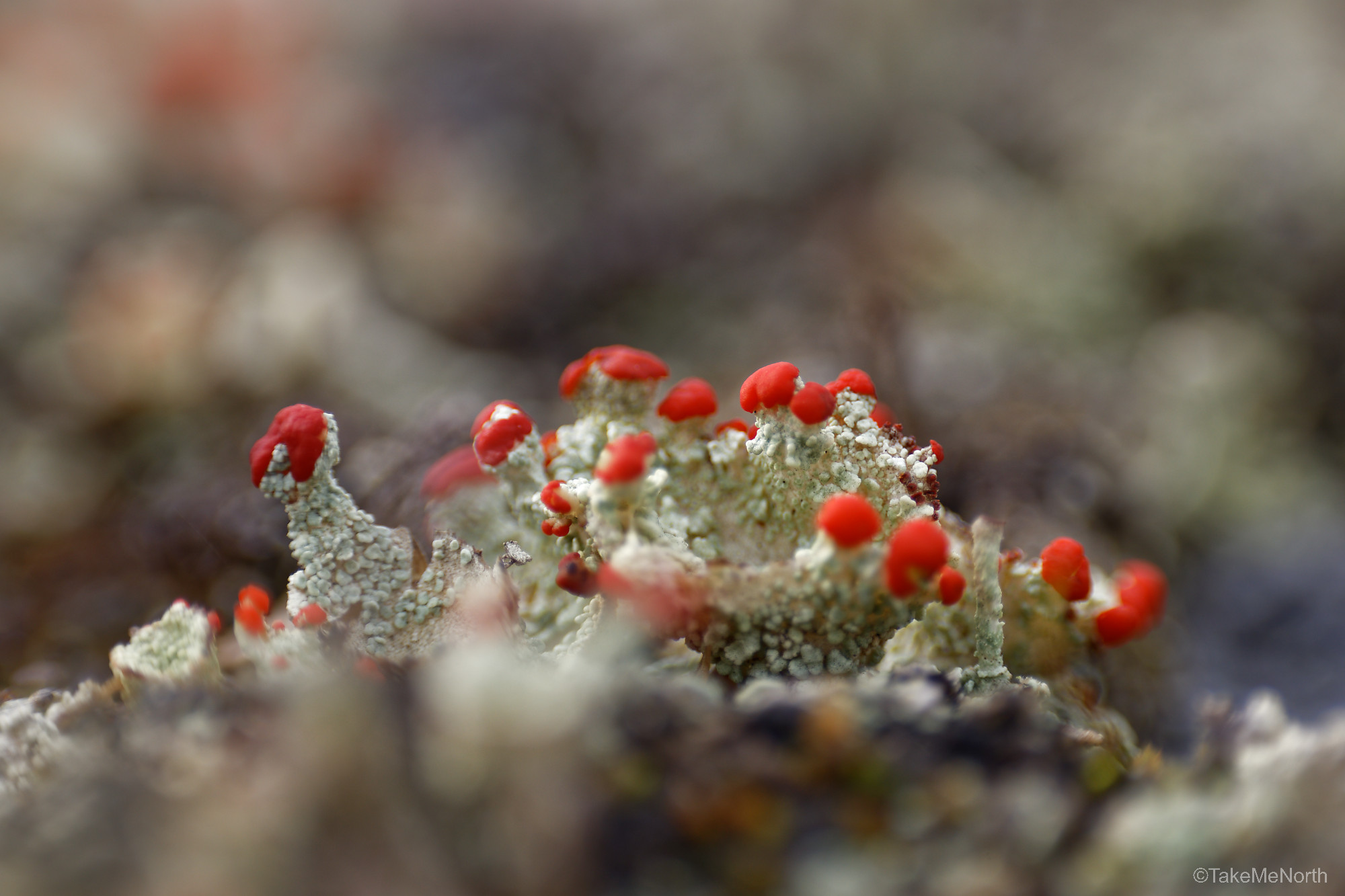
Cladonia coccifera (Madame’s cup lichen).
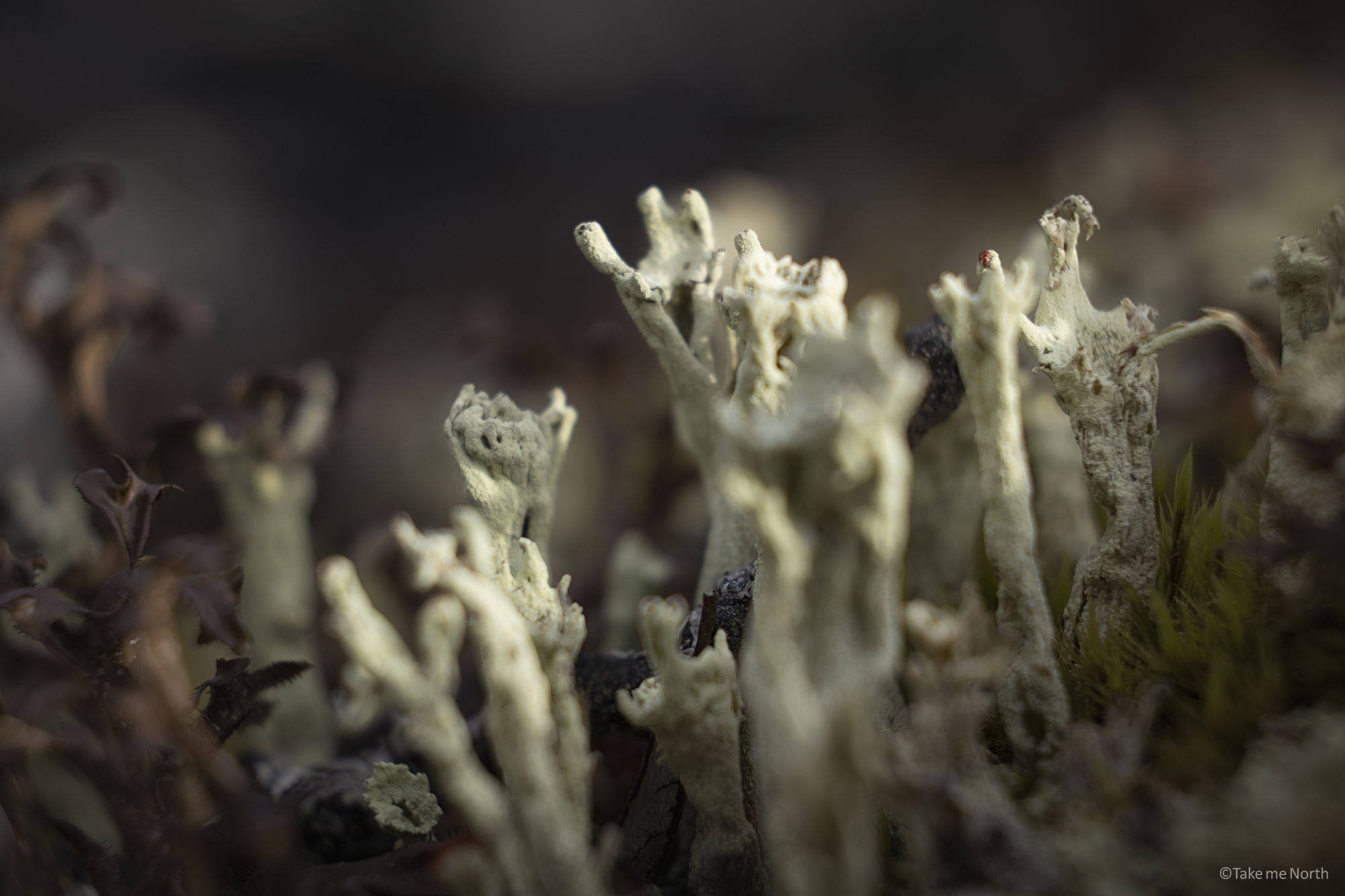
Cladonia subulata (Antlered powderhorn).
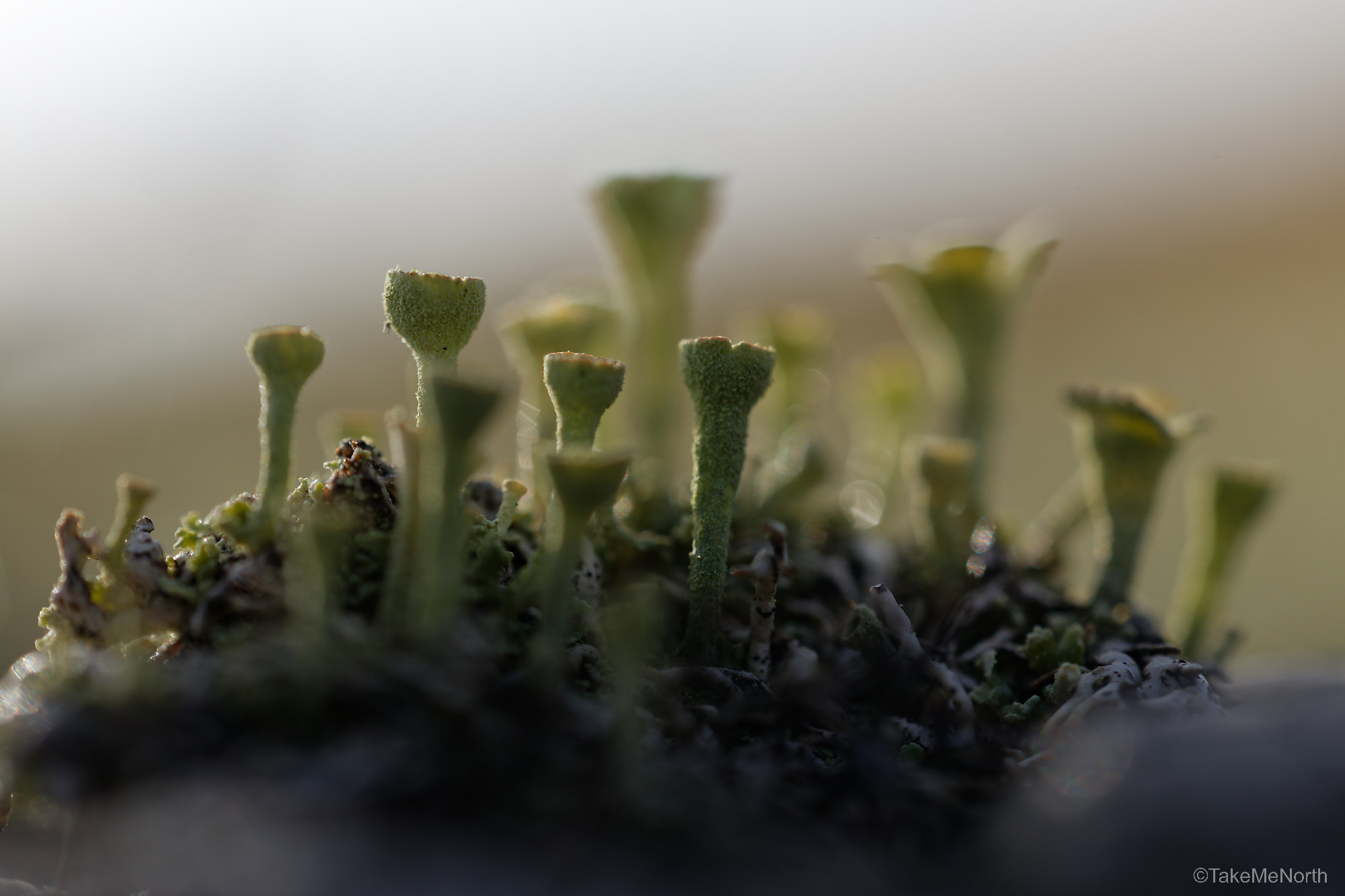
Cladonia asahinae (Pixie cup lichen).
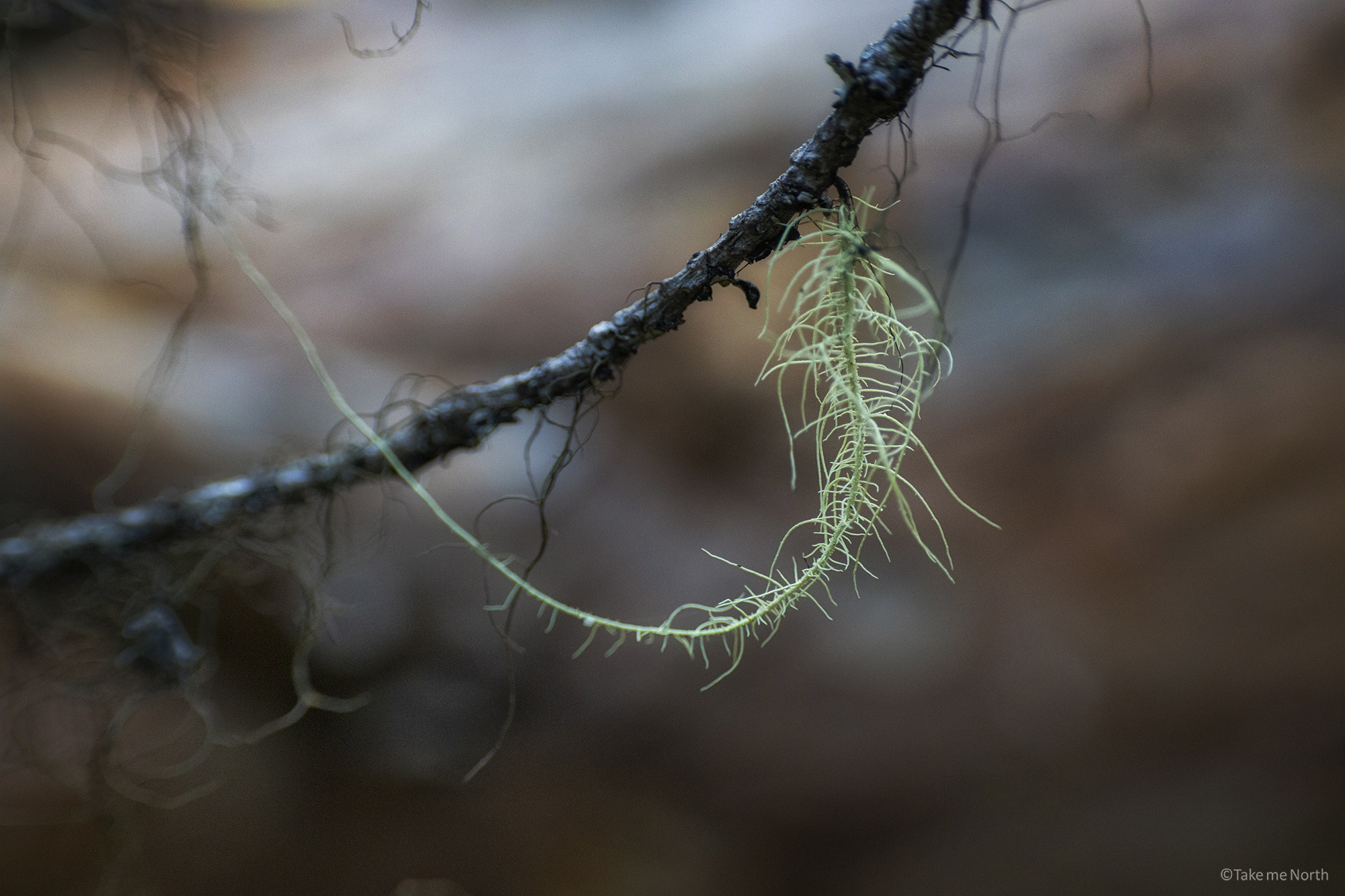
Usnea lapponica (Lapland beard lichen).
